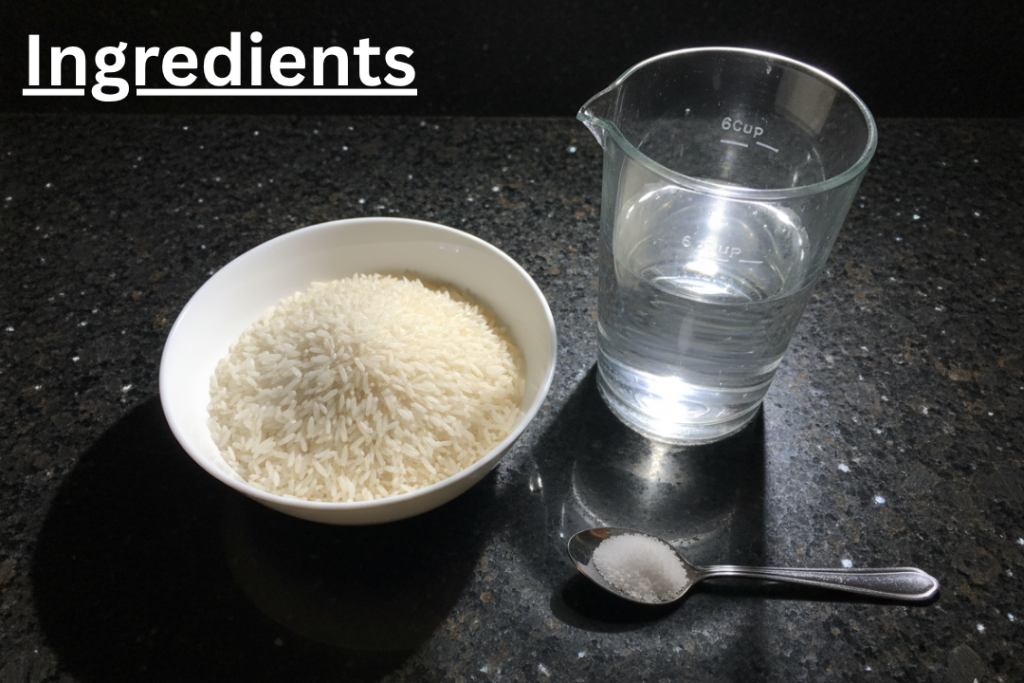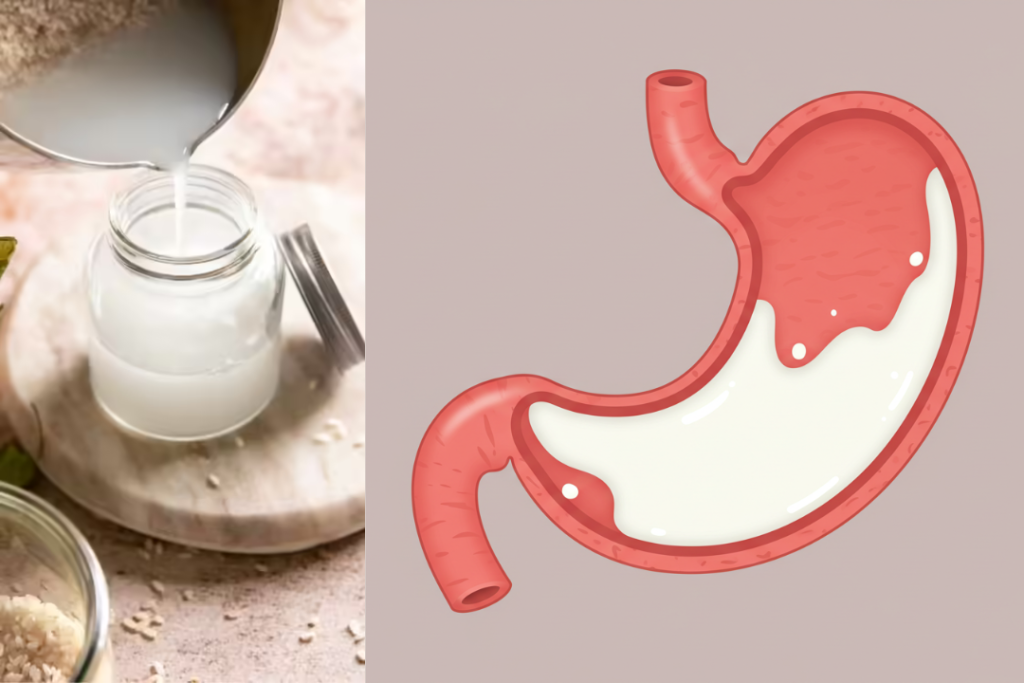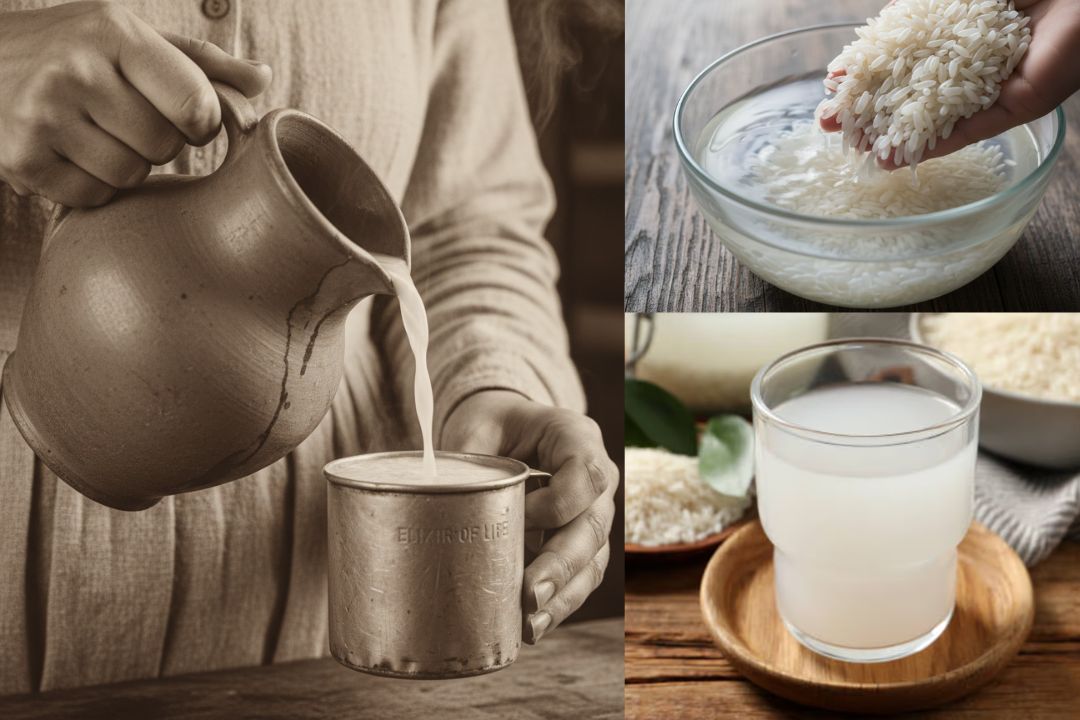Rice Water: The Multi-Purpose Pioneer Remedy Your Pantry Has Been Hiding
When pioneers crossed the frontier, they carried few luxuries but endless resourcefulness. One simple ingredient “rice” served as more than just sustenance. The cloudy water left after boiling rice became their go to remedy for everything from life-threatening dehydration to promoting healthy skin and hair. This wasn’t folklore; it was practical wisdom backed by results that modern science is now validating.
Today, while we have access to commercial products, understanding how to harness rice water’s versatile benefits puts powerful, affordable solutions literally in your hands. Whether you’re preparing for emergencies, seeking natural remedies, or simply wanting to reduce dependence on store-bought products, rice water deserves a prominent place in your homestead knowledge base.
The Science Behind Rice Water’s Power
Rice water works because of its unique nutritional composition. When you boil rice, starch molecules break down into simple carbohydrates, amino acids, vitamins (especially B vitamins), minerals, and a compound called inositol. This combination creates a solution that your body can use in multiple ways.
Studies have shown that rice water effectively treats diarrhea and reduces stool frequency more efficiently than standard oral electrolyte solutions, making it a proven emergency remedy. But the benefits extend far beyond dehydration treatment.
Emergency Rehydration: When Every Sip Counts
The most critical use of rice water is treating dehydration during illness. When someone suffers from vomiting, diarrhea, or heat exhaustion, plain water often isn’t enough. Your intestines need glucose and sodium together to properly absorb fluids, a mechanism called sodium-glucose co-transport.
The Life-Saving Recipe:
- 1 cup white rice (long-grain preferred)
- 6 cups clean water
- 1/4 teaspoon non-iodized salt

Preparation:
- Rinse rice thoroughly under cold water
- Bring 6 cups of water to a boil
- Add rice and boil for 5-7 minutes until water turns cloudy
- Strain immediately (save the rice for eating later)
- Add 1/4 teaspoon salt while still warm, stir until dissolved
- Cool to room temperature before drinking
This yields about 5 cups of rehydration solution. The starch from rice creates a slow-release effect, providing sustained hydration rather than the quick spike and crash of plain sugar water.
Critical Dosing Guidelines:
- Adults: 1 cup every 1-2 hours until symptoms improve
- Children (2-10 years): 1/2 cup every 1-2 hours
- If vomiting persists: Give 1-2 tablespoons every 5 minutes to avoid triggering more vomiting
Storage: Use within 12 hours at room temperature, or 24 hours refrigerated. Always make fresh batches for best effectiveness.
When to Seek Emergency Help
Rice water addresses symptoms, but certain situations require professional medical intervention immediately:
- No urine output for 12+ hours despite rehydration
- Blood in vomit or stool
- High fever (103°F+) with dehydration
- Confusion, extreme lethargy, or unconsciousness
- Dehydration in infants under 6 months
In true emergency situations where help isn’t available, rice water keeps someone stable while their body fights the underlying illness. The Home Doctor: Practical Medicine for Every Household provides comprehensive guidance on managing medical emergencies when professional care isn’t accessible.
Natural Digestive Soother
Beyond emergency rehydration, rice water has been traditionally used to treat various digestive issues including gastroenteritis. The starch coats the stomach lining, providing a protective barrier that can ease inflammation and discomfort.

For general digestive upset, nausea, or mild stomach pain, drink 1/2 to 1 cup of unsalted rice water (prepared the same way but without adding salt). The bland, starchy solution settles the stomach without triggering further irritation. This is particularly effective for:
- Mild food poisoning recovery
- Morning sickness during pregnancy
- Post-illness appetite restoration
- Gentle nutrition when solid food is too harsh
Many homesteaders keep rice water on hand as their first response to stomach troubles before symptoms escalate to serious dehydration.
Hair Strengthening and Growth
Women in China, Japan, and Southeast Asia have used rice water as a hair treatment for hundreds of years, and the practice is gaining recognition for good reason. Rice water contains inositol, a carbohydrate that strengthens hair, reduces breakage, and promotes shine.
How to Use Rice Water for Hair:
Method 1: Simple Rinse
- Prepare rice water without salt (use 1/2 cup rice to 2 cups water, soak for 30 minutes, strain)
- After shampooing, pour rice water over hair
- Massage into scalp and work through to ends
- Leave for 5-10 minutes
- Rinse thoroughly with plain water
- Use 1-2 times per week
Method 2: Fermented Rice Water (Stronger)
- Prepare rice water as above
- Leave at room temperature for 24-48 hours to ferment (it will smell slightly sour)
- Dilute with 1-2 cups fresh water before use
- Apply the same way as simple rinse
The amino acids in rice water fortify hair strands, reducing breakage and split ends, while its natural starch lightly coats hair without weighing it down, leaving it smoother and shinier. Many users report noticeable improvements in hair texture, elasticity, and growth after consistent use.
Skin Care Benefits
Rice water isn’t just for internal use. Traditional uses of rice water for skin health include helping moisturize skin, reducing eczema and dryness symptoms, and decreasing dermatitis symptoms among people with sensitive skin.
Simple Skin Applications:
As a Facial Toner:
- Soak 1/2 cup rice in 2 cups water for 30 minutes
- Strain and store liquid in a clean bottle
- Apply with cotton pad morning and evening after cleansing
- Keeps refrigerated for up to one week
For Sunburn or Skin Irritation:
- Prepare rice water, cool completely
- Soak a clean cloth in the liquid
- Apply as a compress to affected areas for 10-15 minutes
- Repeat 2-3 times daily
Bath Soak for Eczema or Dry Skin:
- Prepare double recipe (2 cups rice to 12 cups water)
- Add entire amount to warm bath water
- Soak for 15-20 minutes
Scientific studies suggest that rice water could improve skin hydration and elasticity, and potentially help prevent the appearance of wrinkles and expression lines. The vitamins and minerals in rice water, particularly vitamin E and ferulic acid, act as antioxidants that may protect skin from environmental damage.
Preparing Rice Water: Pro Tips for Maximum Effectiveness
Not all rice water is created equal. These refined techniques maximize benefits for different uses:
For Rehydration (Emergency Medical Use):
- Always use white rice—it extracts faster and more completely
- Boil rather than soak for maximum starch extraction
- Must add salt for proper electrolyte balance
- Use immediately or within 12 hours
For Hair and Skin (Cosmetic Use):
- Fermented rice water is more potent due to beneficial acids and enzymes
- Can use brown rice for extra nutrients (though extraction takes longer)
- No salt needed for cosmetic applications
- Lasts up to one week refrigerated
Rice Selection Matters:
- White long-grain rice: Best for medical rehydration, consistent results
- Brown rice: More nutrients for cosmetic use, takes longer to extract
- Jasmine or basmati: Works but may have subtle fragrance
- Never use instant rice: Processing destroys the starch structure needed for effectiveness
Common Mistakes to Avoid
Even simple remedies can fail if prepared incorrectly:
Never Skip the Salt for Rehydration: Plain rice water without salt won’t properly rehydrate someone. The sodium is medically necessary for fluid absorption. However, never exceed 1/4 teaspoon per 6 cups—more salt doesn’t mean better results.
Don’t Use Spoiled Rice Water: If it smells sour (when not intentionally fermented), has separated liquid, or shows any mold, discard immediately. Bacterial contamination is dangerous for sick people.
Avoid Instant Rice: Pre-cooked instant rice has lost the starch structure that makes rice water effective. Always use regular white or brown rice.
Don’t Force Liquids on Unconscious People: If someone can’t swallow properly, oral rehydration is dangerous. This requires emergency medical intervention.
Watch for Allergic Reactions: Though rare, some people are allergic to rice. If skin irritation, rash, or breathing difficulties occur, discontinue use immediately.
Alternative Grains When Rice Isn’t Available
The principles of starch-based rehydration and care extend to other grains if rice supplies run low:
Barley Water: Use 1 cup barley to 6 cups water, simmer 15-20 minutes. Historically common in British folk medicine.
Oat Water: Use 1/2 cup rolled oats to 6 cups water, simmer 5 minutes. Particularly soothing for digestive inflammation.
These alternatives work on the same fundamental principle, starch extraction creates the glucose needed for effective rehydration and provides gentle nutrition during recovery.
The Bigger Picture: Food as Medicine
Rice water exemplifies a crucial preparedness principle: the most reliable solutions are those that have proven themselves across generations. Ultimate Survival Foods explores dozens of foods that serve dual purposes as both nutrition and medicine—knowledge that multiplies your preparedness investment exponentially.
Our ancestors didn’t separate “food” from “medicine” the way we do today. They understood that proper nutrition and targeted home remedies formed the foundation of healthcare. Every homesteader should develop this perspective: what’s in your pantry right now that could serve multiple critical functions in an emergency?
True self-sufficiency means understanding principles, not just stockpiling products. You should know how to address common health issues using multiple methods. Rice water isn’t a replacement for modern medicine—it’s a proven backup when commercial solutions aren’t available or as a first-line treatment for minor issues.
Taking Action: Make This Knowledge Yours
Reading about rice water won’t help anyone in an emergency. The time to learn is before you need it.
This Week:
- Make a batch of rice water to familiarize yourself with the process
- Try it as a hair rinse or skin toner so you understand what it should look, smell, and feel like
- Create laminated recipe cards for your first aid kit
- Check your rice and salt storage levels
This Month:
- Teach at least one family member the rehydration recipe
- Practice making rice water using alternative heat sources (camp stove, outdoor fire)
- Stock up on rice if your supplies are low—aim for 25-50 pounds per person
Building Complete Self-Sufficiency: Understanding rice water is just one piece of homestead medicine. Independent Backyard: Making Your Homestead Self-Sufficient provides comprehensive guidance on creating layered resilience systems that don’t depend on fragile supply chains—from healthcare to food production to water management.
Final Thoughts
Rice water represents the intersection of practicality, tradition, and proven effectiveness. For emergency dehydration, it’s a potentially life-saving remedy you can make with basic pantry staples. For hair and skin care, it’s a gentle, natural alternative to expensive commercial products. For digestive upset, it’s a soothing first response that’s been trusted for generations.
The pioneers who settled America’s frontier didn’t survive on luck or superior gear—they survived on knowledge. Every time you learn a traditional remedy, you’re reclaiming practical wisdom that modern convenience has pushed aside. Whether you’re preparing for emergencies, seeking natural health solutions, or building genuine self-reliance, rice water deserves a place in your skillset.
When the crisis comes—whether personal illness, community disaster, or something larger—you won’t have time to research. You’ll act on knowledge you’ve already internalized. Make rice water one of those skills. Practice it. Teach it. Preserve it.
Because sometimes the most powerful medicine isn’t found in a pharmacy—it’s waiting in your pantry right now.
What traditional remedies have proven most valuable in your homesteading journey? Share your experiences in the comments below and help build our community’s collective knowledge.
This information is for educational purposes and represents traditional practices. It does not replace professional medical advice. Always consult healthcare providers when possible, and use traditional remedies as complementary approaches or in genuine emergencies when modern care is unavailable.

